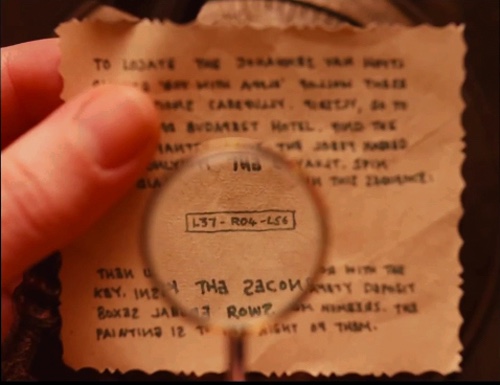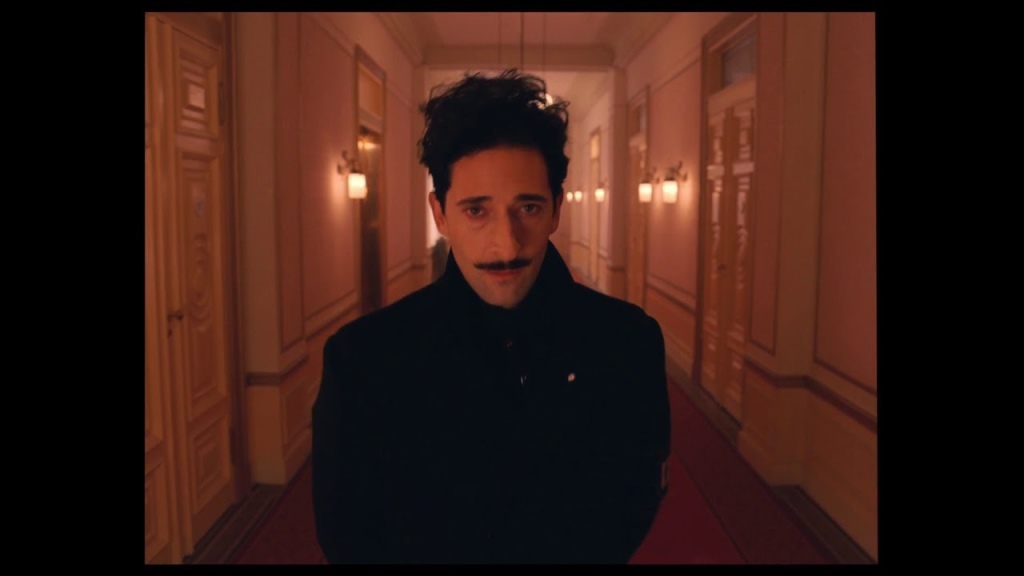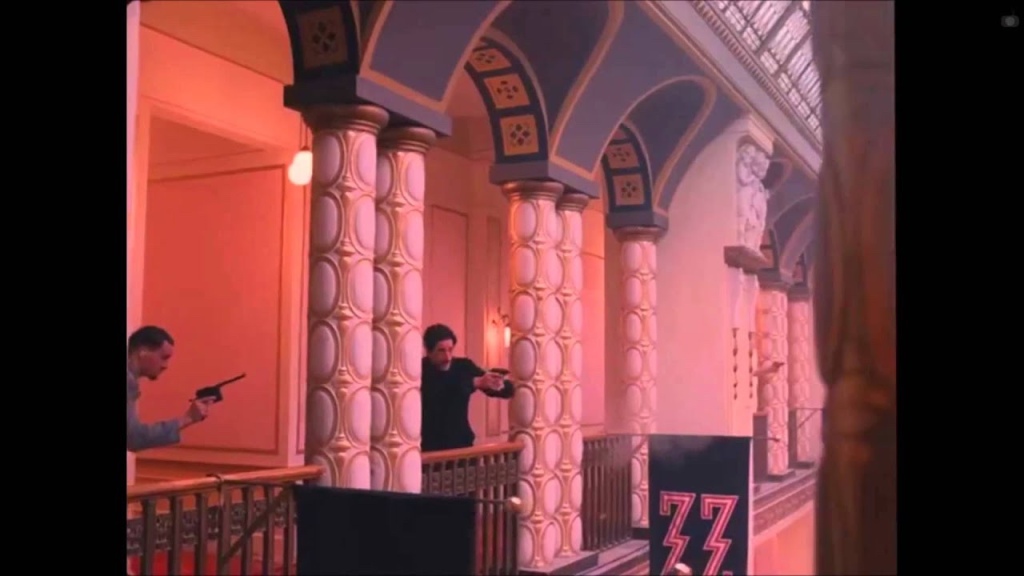We were tasked to analyse the editing from the 28th and 29th chapter of The Grand Budapest Hotel. In class, we discussed the deliberate and considered pacing and sequencing throughout the chapters.
Chapters 28-29: Second Copy of the Second Will
Anderson begins the chapter with an exterior extreme long shot of the hotel, in order to establish the setting. From this establishing shot, the viewer is informed of the fact that the rest of the scene will take place from within the hotel. After this, we enter a sequence of rapid straight cuts of items such as a bell, a pigeon hole and a shaker, all of which are embossed with the “ZZ” insignia. This montage-like sequence informs us that the fascist group are indeed present within the hotel.
We then cut to a sequence of fairly short continuity cuts during which Agatha presents the hotel guard with a Mendl’s cake. Simultaneously, the scene with M. Chuck is taking place, through which the two sequences of continuity editing become a parallel edit. Anderson then cuts to a single sequence of continuity editing of Agatha walking up the stairs and into the storeroom.
Anderson then makes use of a glance object shot, having Agatha glance at the note and subsequently cutting to a closeup of the note. This allows the viewer to read the note for themselves and understand the important details written upon it. We then cut to another two sequences of continuity editing (Agatha upstairs, Dimitri and M. Chuck downstairs) which converges in another sequence of parallel editing.

During the conversation between Dimitri and M. Chuck, Anderson makes use of an editorial technique known as an “insert”. We are shown the mugshot of Agatha to inform us of the fact that Dimitri is aware of her existence, however the characters on-screen are unable to see this. Afterwards, an unconventional chase sequence ensues between Dimitri and Agatha during which Wes chooses to avoid the use of edits and instead decides to implement longer takes, as well as camera movements. For example, Anderson uses a two-shot in place of a shot/reverse shot sequence to avoid editing.
After utilising two reaction shots for Dimitri and Agatha respectively, the viewer can empathise with the both of them. We then cut to another slow chase sequence in the hotel hallway in which Anderson employs long takes and infrequent edits. It is interesting to make note of the fact that the few cuts used are in time with the music. During this, parallel editing is present between the chase and the other ZZ soldiers pursuing Gustave and Zero.

Anderson then makes use of a zoom honing in on Gustave and Zero, during which the pace of editing quickens for chaotic effect. Afterwards, a shot/reverse shot sequence between Dimitri and Gustave takes place to establish continuity. A satisfying rhythm is created during this sequence when the men with guns enter through the expert use of cuts and sound design choices.
When the shooting ends, the pacing of the editing slows as the camera pans 90º between each of the characters. Another sequence of parallel editing takes then occurs depicting Zero running around the hotel as well as Agatha outside hanging on the ledge. Through this, Anderson makes use of cross cutting to emphasise the concurrency of the scene.

You’ve got the hang of this now. Keep them coming…
LikeLike